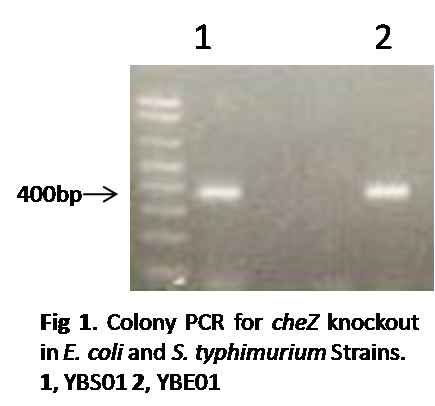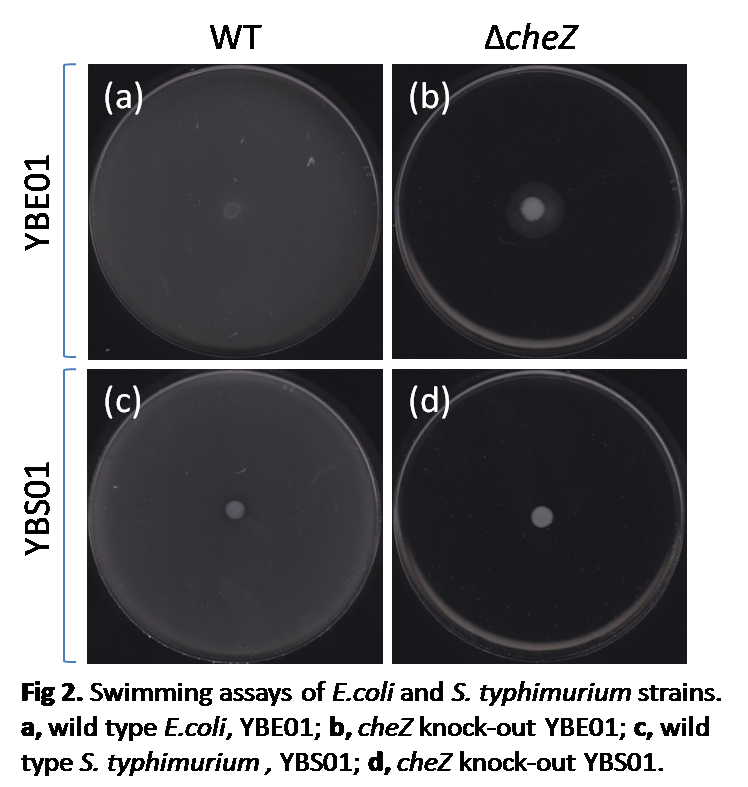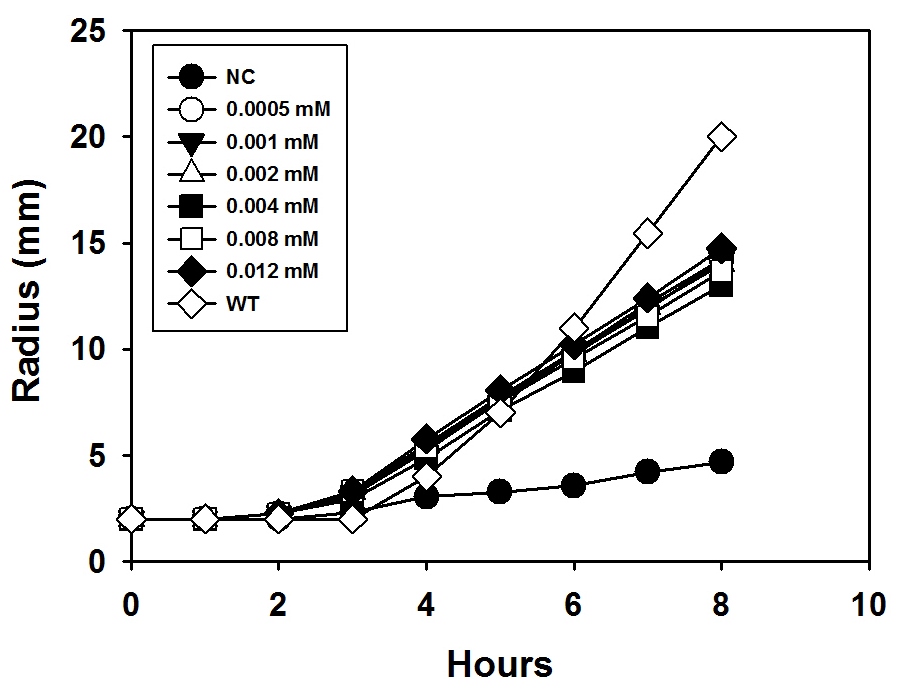Team:HKU-HKBU/Speed Control Results
From 2009.igem.org
Contents |
Results
cheZ knockout detection in YBE01 and YBS01
cheZ knockout is a crutial step for speed control. We believed that by controlling the expression level of cheZ, we could manipulate the ratio of flagella rotating direction (clockwise & counterclockwise). Therefore, higher concentration of expressed CheZ could lead to faster swimming speed. This part played a key role as an "adapter" of bactomotor.
Colony PCR test
The expected DNA size of this test was about 400bp, which showed the successful recombination procedure.
Swimming Test
After a swimming assay for 8 hours, the patterns three strains formed below showed that the ineffectiveness of the swimming ability of the two bacteria strains, which was an indication of the successful knockout of cheZ gene in E.coli YBE01 and S.typhimurium YBS01.Regulation of cheZ expression
Swimming test
The plsmid pET-his-cheZ-cm was transformed to MG3. Different concentrations 0.001, 0.002, 0.004, 0.008, 0.012mmol/L of IPTG were added into the cultivating solution LB to induce expression of the plasmid.
No Chloramphenicol
Chloramphenicol added
The results above are ambiguous, and we tried to verify if we were successful in achieving differential levels of CheZ in MG3 by doing western blotting.
Western Blotting
From the results above, it can be seen that the CheZ concentration in MG3 was proportional to the concentration of IPTG added to the cultures when the induced time was about 24 hours. The samples with induced time less than 24 hours showed no obvious bands in the Western Blotting.
According to the result of Western Blotting, we could explain the similar swimming abilities of bacteria with different IPTG concentrations. As the speeds of swimming were tested within 9 hours, which were too short for the induced reactions to undergo, the speeds were more or less the same. Another problem was that even negative control strain (no IPTG added) swam, which was probably caused by leaky expression.
 "
"



